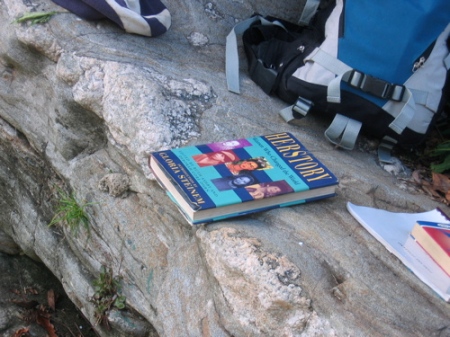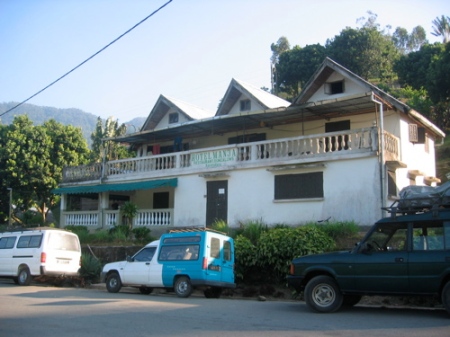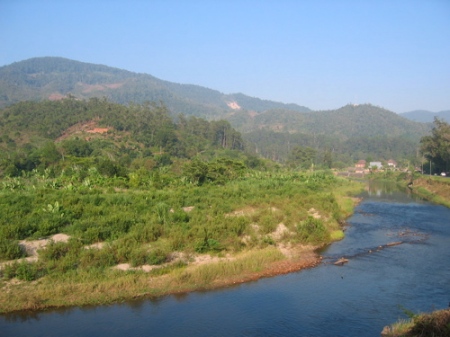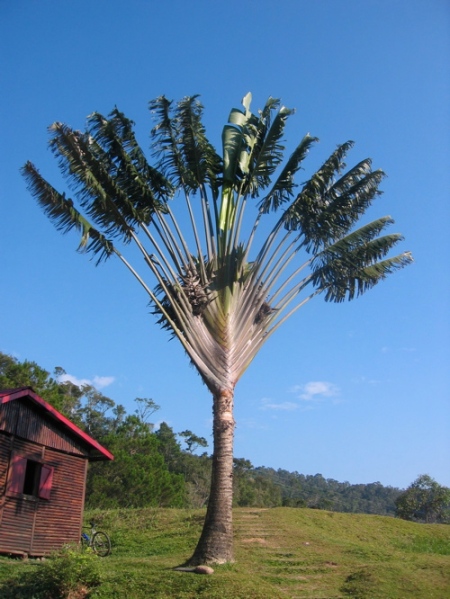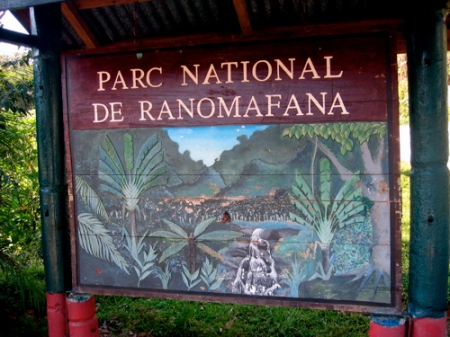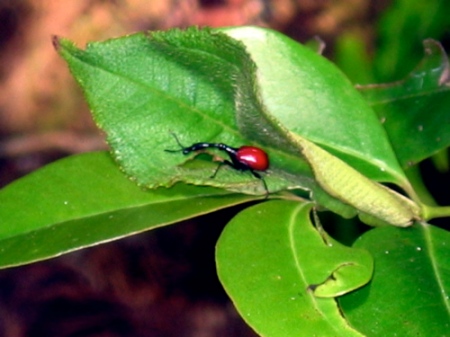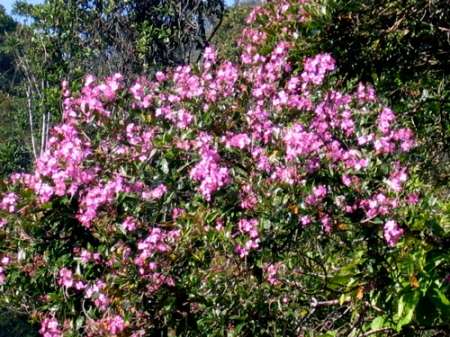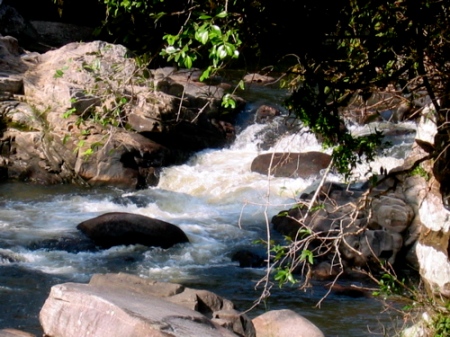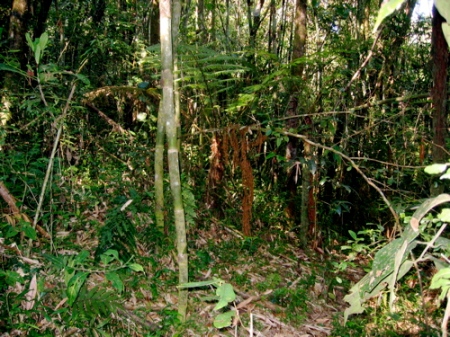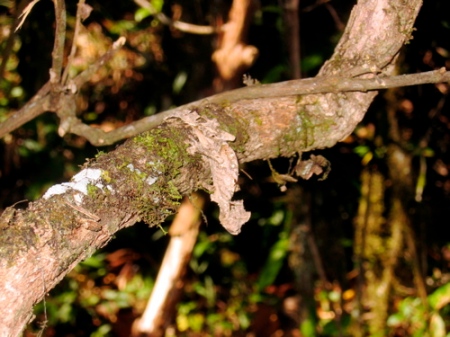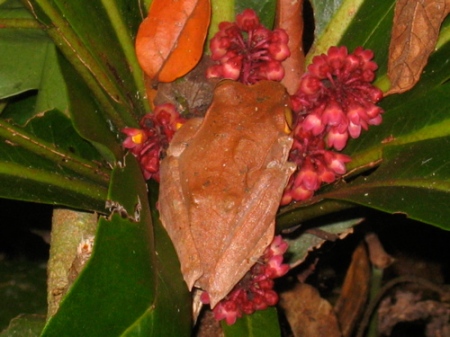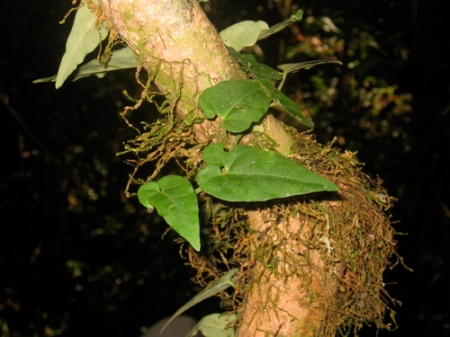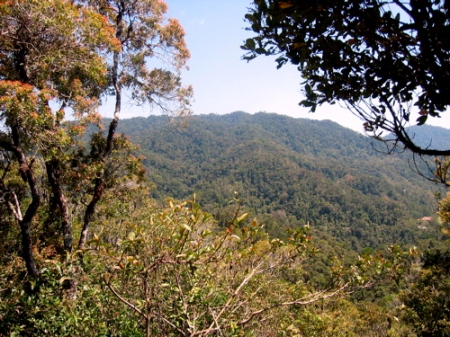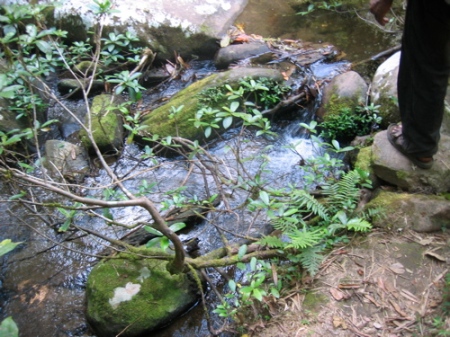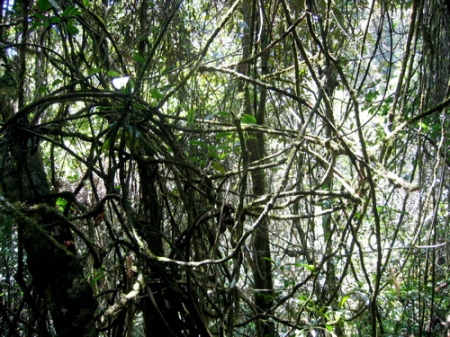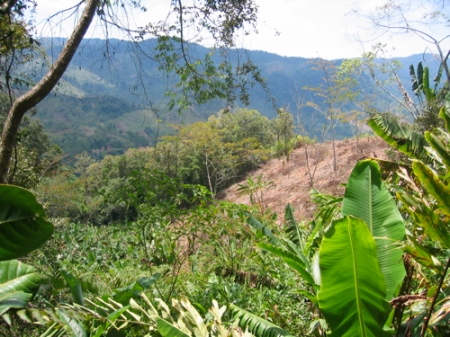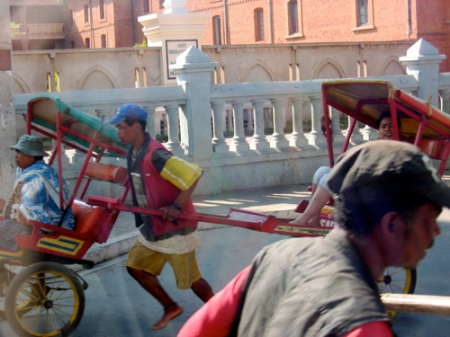
Pousse-pousses in ackshawn, y'all.
I had gotten accustomed to the lack of variety when it came to food. Long ago, when I first investigated travel to Madagascar, the woman at the
i-to-i meaningful travel had told me that vegans in Madagascar would have “no trouble as their diet is primarily vegetables.”
Well, let me tell you. Ms. i-to-i was a LIAR. Because Malagasy people eat meat, and they eat it with zeal, verve, and glee. Zebu steaks, chicken, cow, pork, anything. If it moves, they eat it. So my diet consisted of bread, rice, bread, and rice. Before we had departed Antananarivo, Fano had dispelled Ms. i-to-i’s dreamland scenario. He said to the group that Malagasy people served fatty, oily foods as a sign of respect to their visitors, and only recently had they begun to realize that not only is that shit nasty, but it’s also bad for you.
So I started my day in Antsirabe out with a baguette and coffee so strong and thick that it almost resembled pudding – just the way I like it.
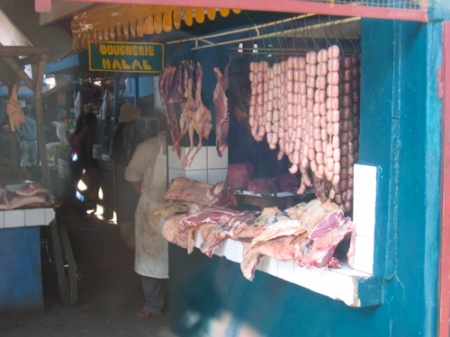
Wouldn't you rather have meat?
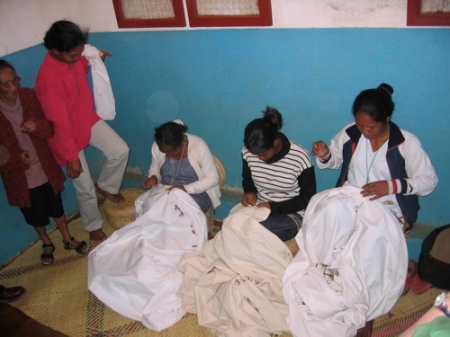
Making tablecloths.
We left the calm of the downtown area in order to see an embroidery factory and an aluminum factory – neither of which sounded particularly engaging to me, but whatever. Other people felt the need to buy crappy souvenirs, so who was I to complain?
We all loaded into the bus and were taken off the pavement onto roads full of potholes. We passed people doing their clothes in muddy puddles along the road. Chickens roamed the streets freely, presumably unaware that at any given moment they could potentially be snatched up and swung around by their necks until they were dead.
We stopped at a relatively peaceful looking abode, but when we left the bus we were swarmed by beggar children pleading for “stilos,” or pens. Once again, my pens were on top of the bus. It took me several days to get this routine down, but I finally managed it. We squeezed past the hordes of children and entered this dark building, where a little old woman spoke in Malagasy about how they sit there and sew tablecloths in the dark, unlit room all day long until it’s time to go home, and then they sew tablecloths at home. Some had lemurs, some had palm trees, some had farmers toiling in the fields – all were pretty lame, by my estimation. I’m just not into that sort of shit.
We then went next door to the aluminum factory, where a man demonstrated how they very ingeniously recycle things from coke cans to hospital IV tubing (unused, but obsolete, he made sure to note) in order to fashion miniature bicycles, pousse-pousses and cars. All from garbage. They were very clever and charming, but I passed. I just don’t have the time for such tomfoolery.
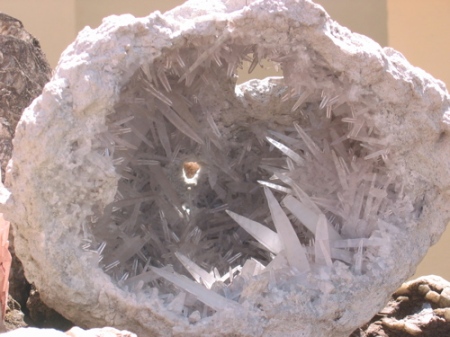
Native to Madagascar. It's totally awesome but I forgot to write down what it's called.
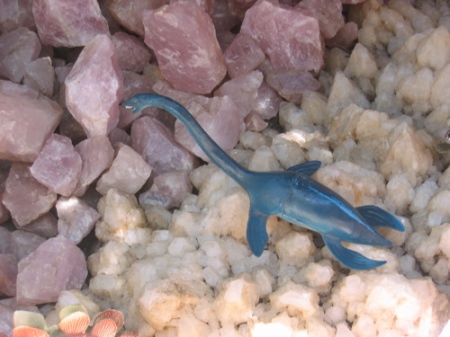
Nothing classes up a gem display like a rubber plesiosaur.
After several members of the group purchased wares, we headed over to a “gem factory” where we were given a tour of the precious stone plant and the process through which they take the raw material and turn it into such classy things as carved turtles, ammonite brooches, and lemurs made from crystal. Not that it was all tacky – some of the things they were selling were quite beautiful. Some people bought gemstones which they would have set when they returned home.
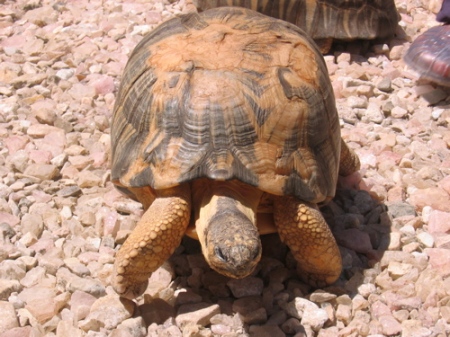
Tortoise at the Gem Barn.
After this, we strolled the marketplace for a bit, where I noticed a disproportionate number of hair salons. There was one about every three or four kiosks.
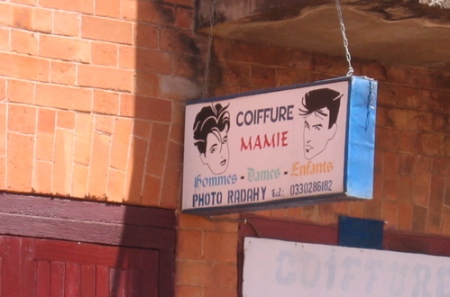
Hairdos Madagascar-style.
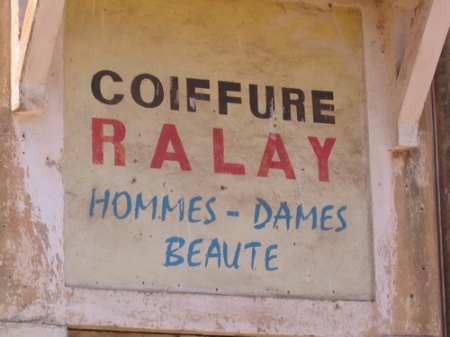
Plus des coiffures, y'all.
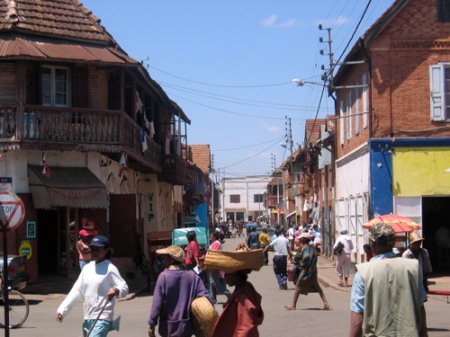
Antsirabe market.
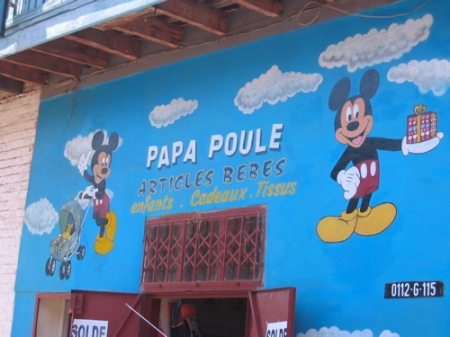
You can't get away from this jerk anywhere.
We left Anstirabe and headed for Ambositra, which, we were told, was the artisans capitol of Madagascar, and was rife with wood carvings and the like. Again, I really didn’t care, but the mention of wood carvings made several people in the group salivate with glee.
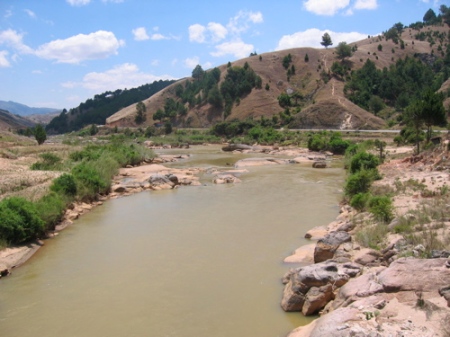
Along the way, we stopped – there was a collapsed bridge to the side of the road. Fano explained to us that when the opposition to the current President had tried to seize control, they destroyed this bridge in an attempt to halt all business into Antananarivo. It had worked for a spell, but we looked up the road a piece and saw a newfangled, fancy bridge, which the President had constructed with the help of the French government (my facts may be slightly skewed. I’m writing this from memory. It is sufficient to say that the jackass opposition’s plan to topple the President from power didn’t work – all it did was get the area a better bridge).
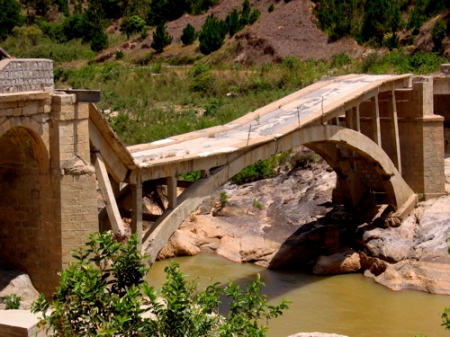
Old bridge destroyed by forces loyal to the opposition.

Newfangled bridge built in its place.
We got to Ambositra and ordered lunch at a hotel restaurant which, given the clientele, was clearly a hot spot for tourists when they came through town. Yes, I ordered ‘legumes sautees avec riz nature.’ After we all ordered our food, we hiked to the town center where we were promised the miracle of Malagasy woodcarving (we always ordered our food well in advance as we were told ‘Malagasy time’ was much more laid back than we were used to, so a simple order could take quite some time to actually get prepared).
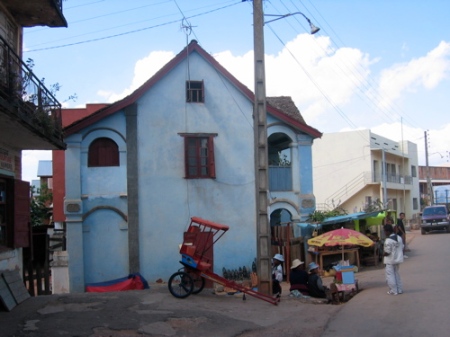
Ambositra pousse-pousse.
The town was full of pousse-pousse drivers waiting to drag fat tourists around to the shops, but we decided to walk up the hill to the stores. We were disappointed by what we found – apparently the woodcarving has taken a turn for the worse in the recent past. Most of it was really unsatisfying wooden renditions of
Tintin book covers (!), wooden carvings of Madagascar, lemurs, and spoons. Now, I can understand the lemurs and Madagascar – but Tintin?
I thought that perhaps it was an eccentricity the owner of the first shop we went into had, but no – each shop had the exact same crap. And when I say crap, I mean it. We were then told that most of this stuff isn’t even made in Madagascar, and that they also put shoe polish on the wood to make it look like a type of wood it actually isn’t. So, this region known for its wood carvings is now known for its laziness. Sad.
After we finished with the shops, we were heading back down to the restaurant when we were swarmed by children. Now, these children didn’t beg or ask for stilos or cadeaux – they gave us little slips of paper on which they had very carefully and neatly written their names and addresses, and asked us to send them postcards from our homes. I got one from a boy named Pascal Razafimanantsoa. (I haven’t sent him a card yet, but I’m going to, I swear!)
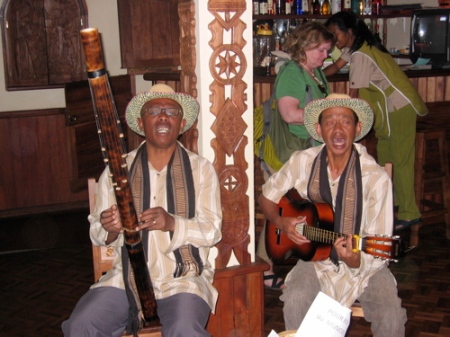
They serenaded us during lunch.
We ate our lunch and listened to some musicians warbling. We then loaded back onto the bus and headed out for
Ranomafana.
The rolling, dry hills reminiscent of California in summer were gold with the late afternoon sun when we took a break at the side of the road by a row of mud huts. The people in these huts were displaying some weird wooden contraption – I couldn’t tell you what it is or what it’s used for – and I assume that was their collective livelihood. “Maybe it’s a platter for fruit,” one of my fellow travelers suggested.
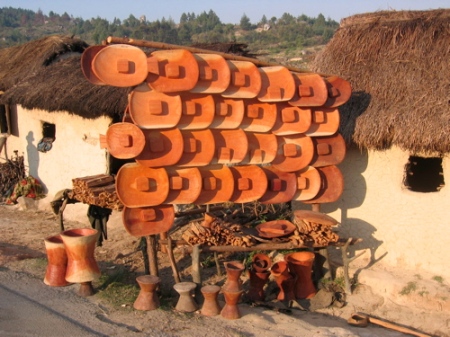
What are they?
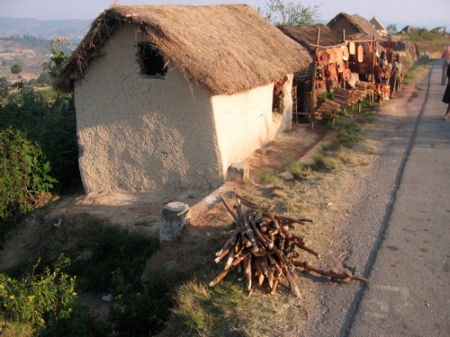
Homes.
As we were walking around, several children and old women approached us. I took the opportunity to pass out postcards of New York City and told them, “J’habite ici,” pointing at the Brooklyn bridge and indicating I lived beyond the photo. The oldest woman asked where the photo was from and I said, “Les etats-unis,” to her, and they all gathered around.
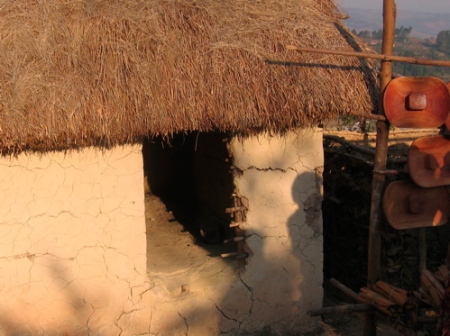
There was a kid in there whose mother was trying to coax him out so I could take his picture but he got nervous and ran away.
I had several different postcards and gave one to all of them, old and young alike, and they all stared, transfixed at them, and thanked me profusely. When we loaded back on the bus, we saw them all gazing at and pointing to each other’s postcards.
As twilight approached, the golden hills gave way to tall, deep green trees, mountains, rock formations, and rivers – we were fast approaching Ranomafana National Park. The road got more treacherous and windy the closer we got to the park, and up in the density of the rain forest we saw orange glows and streaks of smoke rising up to the sky. I immediately got violently angry thinking we were witnessing slash and burn in action, but it turns out there are tribes of people who still live in the rain forest and they weren’t slashing and burning anything.
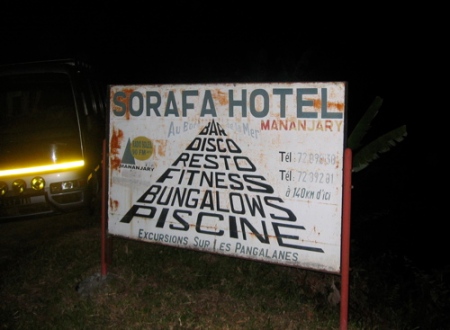
Ad for a hotel up the road a piece. Disco!
Our hotel was on the edge of the forest. Across the street was a winding river. We had to hike up steep stairs to get to our rooms, and after we dumped off our luggage, we slithered back down to the main building for dinner.
That evening we were seated outside. We noticed that on the ceiling there was a pretty intense display of nature at work. Stick insects and moths attracted to the lights didn’t notice the geckos that were inching closer to them, but we all did. We sat there and watched the geckos snatch bugs and gulp them down in one big bite. Then someone at the table shrieked – a tree frog had landed directly in the crease of her supple, pouting bosom. She was fanning herself down as another member of our group kindly scooped the frog out of the fleshy ravine and placed it on a tree.
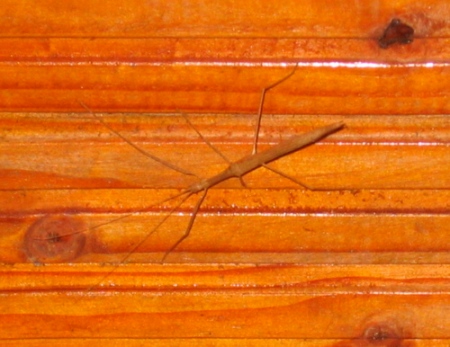
Stick insect on the ceiling.
We enjoyed our meal and were then told we had to get up very early – we were going to be hiking for over six hours through Ranomafana, then taking a break, then hiking for two more hours in a “night walk.”
My roommate and I struggled up the steps to our room and marveled at the bizarre, sleek wood floors and garish red velvet bedding. There was no glass on the windows so we had to sleep with our shutters closed, but I left the window in the bathroom ajar so the sun could get in (the sun rises around 5 there).
I stepped out of our room for a moment and saw an enormous praying mantis hanging out by the light fixture. Nothing makes me happier than praying mantises, so I went back inside and drifted off to an anticipatory sleep – rain forests are awesome and I couldn’t wait to see this one.
